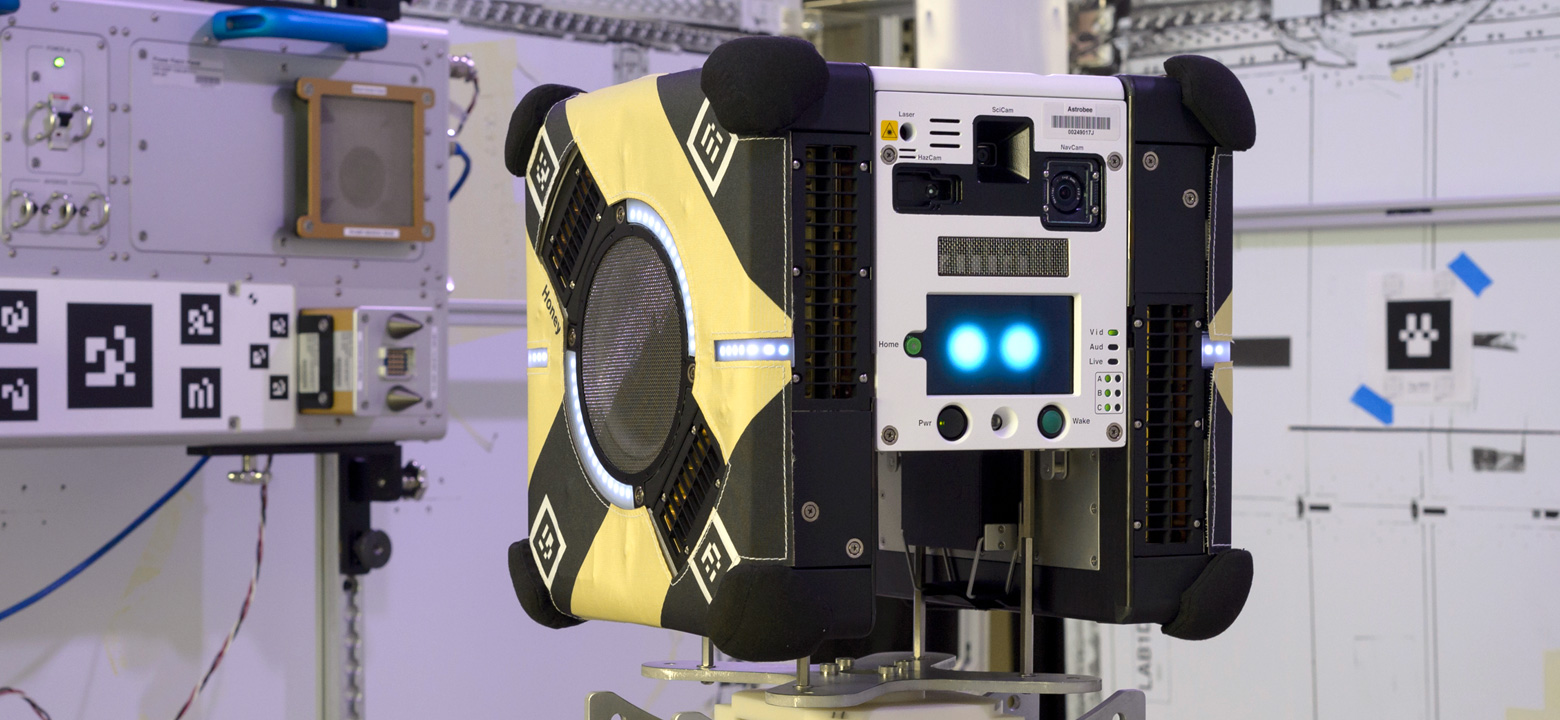
Space isn't exactly a hospitable environment for humans. There are some tasks that only a human mind and hands can perform, but every manned space mission comes with tremendous risk and monetary expense. Fortunately, NASA has a solution that may help reduce the amount of manpower needed on space stations, and allow astronauts to focus on high-priority tasks—robotic “bees.”
The Astrobee robots are currently being developed at NASA's Ames Research Center, as a collaborative effort by the Space Technology Mission Directorate, Advanced Exploration Systems, and the International Space Station. They are robotic assistants that can help free up astronaut's time, though they aren't the first robots to do so—they follow SPHERES, which debuted at the International Space Station in 2006. Astrobees are cube-shaped, fan-propelled robots that can move in any direction, navigate and avoid obstacles by using built-in sensors, grasp objects using a small claw, and recharge by docking themselves when their power runs low.
In space, everything is limited—room, supplies, and especially time. Astronauts can't remain on a space station indefinitely. Not only are resupplying and maintaining life support systems challenging in their own right, spending extended periods of time in zero gravity has negative impacts on human health. For this reason, it's important for astronauts to maximize their efficiency as much as possible during the brief periods of time they can spend in space. Robots can help by taking over routine duties that don't require human intelligence or dexterity.
These robots can't do everything that a human astronaut can, but they are well equipped to handle simple, daily tasks. Handling the space station's basic monitoring, maintenance, and experimental activities allows astronauts to focus on the areas where they are needed most. The Astrobee robots can work either independently or via remote control, which can even allow scientists to help with the workload on the International Space Station without ever leaving the ground.
Better crew efficiency isn't the only thing robots can help with, though. While there are some jobs that only human brains can do, humans are also notoriously error prone. Our efficiency is negatively affected by hunger, thirst, and exhaustion, we are easily distracted, and sometimes we just make mistakes. Automating duties like inventory management reduces the potential for error, which can help streamline processes like re-supplying space stations and maintaining life support systems. This not only saves time, it can save money and reduce risks to human crew members.
The more experiments we conduct in space, the more questions we discover. If NASA and the ISS are going to perform further research, it's imperative that they find more and better ways to maximize their crews' efficiency. Robots are just one way to do this—they don't need to breathe or eat, don't produce waste, and aren't damaged by zero gravity. NASA hopes that these robots will be successful enough to become an essential part of space crews, which would maximize the efficiency of space missions and allow astronauts to gather more experimental data on each trip. In the future, we are likely to see robots of every shape and description integrated into space crews, from small remote-controllable robots like the Astrobees, to advanced AI systems like Cimon (the Crew Interactive Mobile Companion, sent to the ISS in 2018).
Conducting research in space is a dangerous, complicated, and expensive endeavor. The addition of robot assistants to space crews can help reduce the potential for human error, cut costs, and allow astronauts to devote their time to performing experiments and handling high-priority tasks. Though the Astrobees have tremendous potential when it comes to helping out their human crew mates, they are only one step on the road to fully integrated robotic crew members.